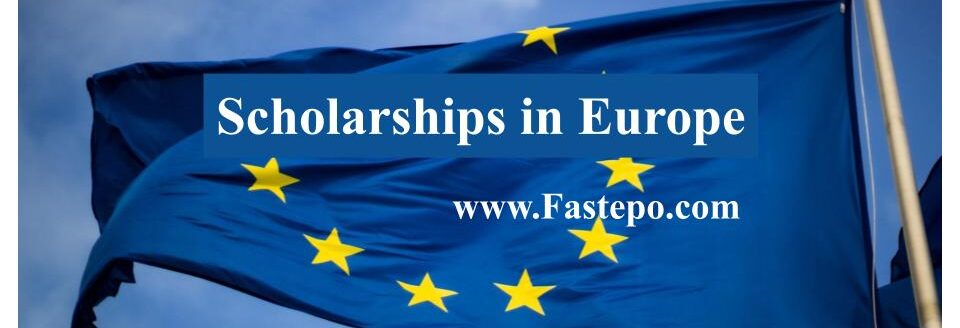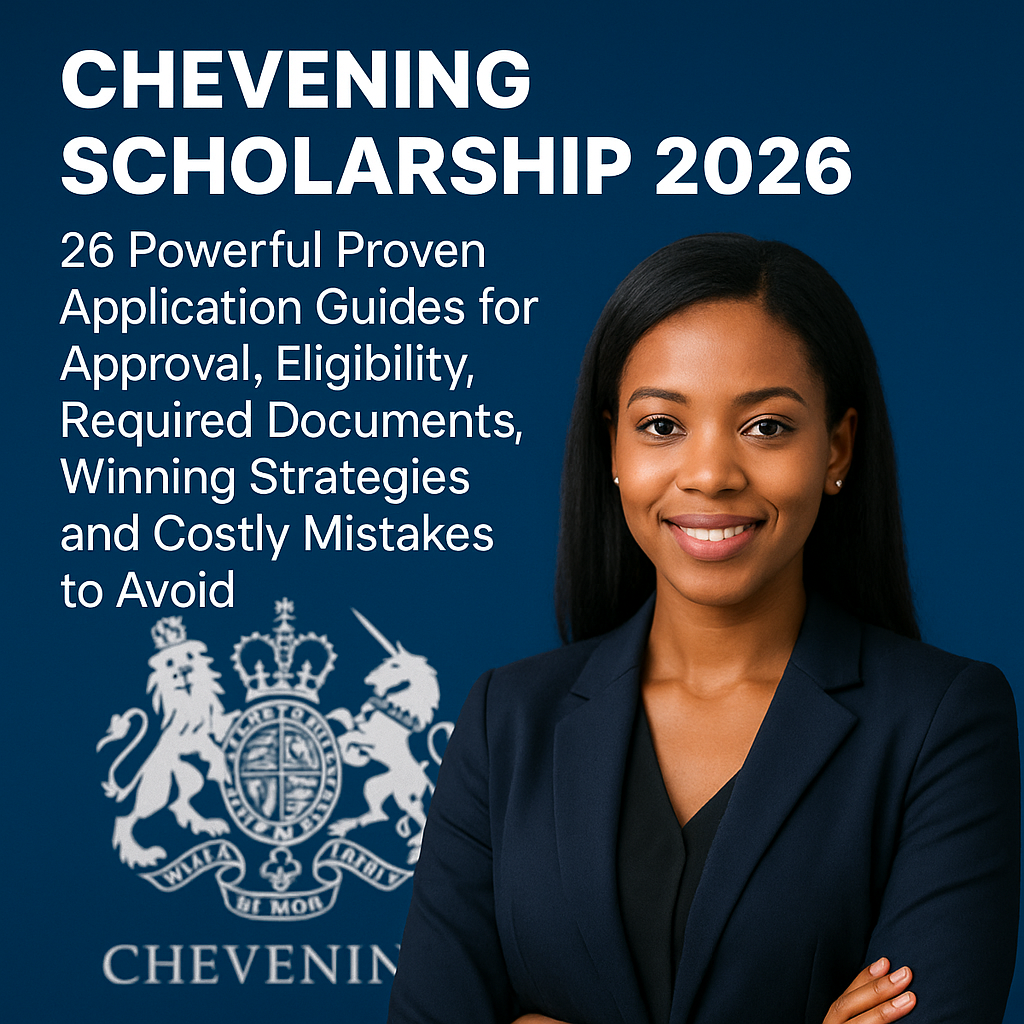 Introduction
Introduction
Imagine a world where the brightest young minds from Africa—those passionate about science, technology, engineering, and mathematics—no longer feel trapped by the lack of funding or opportunity at home. Instead, they step into bustling European labs, study in high-caliber universities, and emerge ready to lead global innovations. The truth is: thousands of African students are quietly tapping into fully funded STEM scholarships Europe for African students, and the 2025/2026 cycle could be their golden ticket. 
This isn’t just a dream—it’s a hidden, powerful path to academic excellence and career transformation. In this post, we’ll pull back the curtain on how African STEM students study in Europe scholarship 2026 opportunities are unfolding, why many people don’t even know about them, and most importantly, how to get a STEM scholarship in Europe as an African student. Along the way, we’ll spotlight one of the most trusted routes: DAAD scholarships STEM Africa Europe. Buckle up—this could change everything.
Why Europe? Why STEM? Why Now
The Rising Appeal of Europe Scholarships for African Students 2025/2026
There’s a surge in opportunities for African students to study in Europe, especially in STEM fields. European universities, governments, and international organizations are increasingly investing in talent from Africa—not just because of altruism, but because global challenges demand cross-border collaboration in science and technology.
Here’s what’s driving this momentum:
- High-profile scholarship programs: From Erasmus Mundus Joint Master Degrees to national scholarships like DAAD, Europe is offering more fully funded options. According to the EU, nearly 150 Erasmus Mundus programs will award scholarships in the 2025/2026 academic year.
- STEM demand and global challenges: As the world grapples with climate change, health crises, and digital transformation, there’s a huge demand for skilled STEM graduates.
- Strategic partnerships: Many European institutions partner with African universities or governments to build research capacity in Africa, which accelerates the push for scholarships.
- Affordable living and education: While not all European countries are cheap, many scholarships cover tuition + living costs + insurance + travel, making the cost barrier significantly lower for international students.
The “Hidden” Part: Why So Few Know About Fully Funded STEM Scholarships in Europe
It’s called a “hidden path” for a reason: not everyone is aware of how accessible these scholarships can be, especially in STEM.
Here’s why many African students miss out:
- Lack of information dissemination: Many scholarship opportunities are not well circulated in local schools or online platforms in African countries.
- Perceived difficulty: STEM programs are tough, and many assume that applying to European universities is only for elites.
- Confusing application processes: With joint master’s programs like Erasmus Mundus, you have to apply to consortia of universities, which can seem bureaucratic.
- Language barriers: Some students fear they must speak German, French, or other European languages. But many programs are fully in English.
- Deadline misalignment: Scholarship deadlines often don’t align with local academic calendars, so many students don’t apply in time.
Yet, despite these challenges, there’s a growing wave of African STEM students who are successfully navigating this path—and it’s not reserved for geniuses or the super-connected. With the right strategy, you can be part of it.
What Does “Fully Funded STEM Scholarships Europe for African Students” Really Mean?
When we talk about fully funded scholarships, especially for STEM, what are we really referring to?
Typically, these scholarships cover:
- Tuition fees: Full waiver of university fees
- Living stipend: Monthly allowance for accommodation, food, and everyday expenses
- Travel costs: Contribution for airfare to/from the host country
- Health insurance: Sometimes mandatory, often covered by the scholarship
- Installation costs: A one-time grant to help you settle in (depending on the program)
This level of funding removes almost all financial barriers, which is why it’s so transformative.
Top Routes to Fully Funded STEM Scholarships in Europe for Africans
Let’s break down some of the most accessible, high-impact pathways for African students aiming to study STEM in Europe.
1. Erasmus Mundus Joint Master Degrees (EMJMD)
- These are multi-country master’s programs operated by consortiums of European universities.
- According to the European Commission, ESR-funded EMJMD scholarships for 2025/2026 cover tuition, travel, insurance, and subsistence costs—sometimes up to €16,800 per year.
- The great thing: you may study in 2–3 different countries over the course of the degree, gaining rich cross-cultural and academic exposure.
2. DAAD Scholarships STEM Africa Europe
- The German Academic Exchange Service (DAAD) offers a range of scholarships to African students in STEM fields. (daad.org.za)
- Some programs cater specifically to Sub-Saharan Africa and cover tuition, monthly stipends, travel, and research. (daad.org.za)
- There are master’s and PhD scholarships: the In-Country/In-Region scholarships help Africans study either in their country or in another African country (sometimes in collaboration with German universities).
- DAAD places a strong emphasis on sustainable development, capacity building, and long-term impact in Africa. (daad.org.za)
3. Swedish Institute Scholarships
When discussing Europe scholarships for African students 2025/2026, it would be impossible not to mention one of the continent’s most empowering opportunities—the Swedish Institute (SI) Scholarships, especially their dedicated initiatives for underrepresented groups in STEM. Sweden is not just known for its snow-covered landscapes and high standard of living; it is also home to some of the world’s most innovative STEM-driven institutions. The Swedish government has made it a priority to attract promising talent from across the globe, and African students continue to be a major focus of this effort.
One of the most exciting offers under this umbrella is the Pioneering Women in STEM Scholarship, an initiative designed not just to bring African women into Sweden’s academic ecosystem but to position them as future creators, innovators, and global STEM leaders. This scholarship targets bright, ambitious women from eligible countries—including Nigeria, Kenya, South Africa, Ghana, Ethiopia, Zimbabwe, Rwanda, and more—who are ready to elevate their careers and contribute meaningfully to technological and scientific advancement.
What sets this scholarship apart is its commitment to supporting women in fields where they have historically been underrepresented. Women across Africa often face systemic barriers—ranging from financial limitations to societal constraints—that hinder their ability to pursue advanced studies in STEM. Sweden aims to close this gap by eliminating the financial burden entirely.
The funding package is impressively comprehensive:
- Full tuition coverage for your entire master’s duration
- A generous monthly stipend of approximately SEK 12,000, allowing you to focus fully on your studies without worrying about part-time jobs or living costs
- A one-time travel grant, making it easier for you to transition from your home country to Sweden
- Insurance coverage, ensuring your health and safety throughout your academic stay
- Access to professional development programs, leadership workshops, mentorship circles, and SI alumni networks
- Opportunities to collaborate with Swedish companies, tech hubs, and research institutions
Beyond the financial benefits, what truly makes SI scholarships transformational is the sense of community and professional belonging they cultivate. SI scholars become part of an elite global network of young leaders who are shaping the future of innovation and international development. This opens doors not just to academic advancement but to career opportunities, conferences, competitions, and collaborations across Europe and beyond.
Sweden also stands out for its student-friendly environment, its commitment to equality, and its strong emphasis on work–study balance. You’re encouraged to explore, network, and grow—not just academically, but personally and culturally. Many SI scholars go on to work with NGOs, tech startups, research labs, government agencies, and multinational corporations, contributing to everything from renewable energy solutions to AI-driven research.
For female African STEM students who want a scholarship that does more than pay tuition—one that invests in their future leadership and global impact—the Swedish Institute Scholarship is a standout path. It is not just an opportunity to study; it’s a launchpad for influence, visibility, and lasting empowerment.
4. Other National / University Scholarships
Beyond the globally recognized programs like DAAD and Erasmus, a growing number of European national governments and top-tier universities are opening doors for African students—often through lesser-known but equally powerful fully funded scholarship schemes. These opportunities are especially valuable because many African applicants overlook them, meaning less competition and higher chances of success.
One standout example is Maastricht University in the Netherlands, which continues to lead the way in international student support. Through the Maastricht University Holland High Potential Scholarship, the university offers full funding for master’s programs, specifically targeting highly talented non-EU applicants, including Africans. According to (thescholarsinfo.com), this scholarship covers full tuition, visa costs, health insurance, and an additional monthly living allowance, making it one of the most attractive options for students seeking world-class education in Europe without financial burden.
What makes these university-based scholarships exceptional is their focus on skills development, research mentorship, and career integration. Recipients often gain access to exclusive academic networks, innovation hubs, and internship placements—giving them a competitive edge in both European and global job markets.
But the opportunities do not end in the Netherlands.
Across Europe, several national governments are quietly offering fully funded scholarships, and many African students are only now discovering them. Countries such as Slovakia provide generous government-backed scholarships for international students, offering tuition waivers, monthly stipends, accommodation support, and cultural integration programs. These scholarships are especially valuable because they are less publicized, which reduces the number of applicants and increases your chances of being selected. (Grants & Scholarships Hub)
Other countries with similar hidden-gem funding options include:
- Hungary, through the Stipendium Hungaricum Scholarship
- Czech Republic, with government scholarships for developing countries
- Poland, offering scholarships through the NAWA program
- Romania, with the Romanian Government Scholarship
These programs often allow students to study in English, and they welcome applicants in STEM fields such as engineering, ICT, environmental sciences, biotechnology, data science, and more.
The real advantage of these “less popular” scholarships lies in reduced competition. Because they aren’t as widely advertised as DAAD or Erasmus, many students from Nigeria, Kenya, Ghana, South Africa, Pakistan, Egypt, and other tier-two countries simply don’t know they exist. This creates a unique opportunity for those who act early and apply strategically.
While major scholarship schemes get most of the attention, the real secret advantage for African students often lies in these national and university-level scholarships—quiet, powerful, fully funded avenues into Europe’s top academic institutions, just waiting for the right applicants to seize them.
How to Get a STEM Scholarship in Europe as an African Student
Now, let’s talk about strategy. How can you (or someone like you) actually secure one of these scholarships?
Step-by-Step Strategy to Apply Successfully
- Research Early and Strategically
- Create a list of programs (EMJMD, DAAD, SI, etc.) that align with your field (engineering, physics, computer science, etc.).
- Use official websites (e.g., the European Commission for Erasmus Mundus, DAAD’s portal) to verify deadlines and requirements.
- Network with current or past scholarship holders via LinkedIn, university forums, or scholarship blogs.
- Prepare Your Academic Profile
- Ensure your GPA / academic scores are competitive.
- Highlight any STEM-related projects, research, or internships. Real experience helps.
- Secure strong recommendation letters — ideally from professors who know your STEM work.
- Prepare a compelling motivation letter / statement of purpose. Explain why you are passionate about STEM and how studying in Europe fits into your career goals and community impact.
- Standardized Tests & Language Requirements
- Check if the program requires English proficiency (IELTS, TOEFL) or tests like GRE.
- Prepare early. A good score will improve your chances—especially for competitive STEM scholarships.
- Application Logistics
- Use the correct portals: EMJMD programs usually have their own application systems. The European Commission lists programs and how to apply.
- For DAAD: apply through the DAAD portal for the right scholarship line (In-Country / In-Region / Master / PhD). (daad.org.za)
- Organize your documents: transcripts, CV, letters, passport, academic certificates, proof of funding (if needed).
- Financial Planning Beyond the Scholarship
- Even with a fully funded scholarship, there might be months where you need extra money (especially before stipend starts).
- Look for student assistantships, teaching or research roles. DAAD-funded students sometimes can work part-time.
- Build a budget: consider visa costs, housing, travel, unexpected expenses.
- Prepare for Cultural and Academic Transition
- Join pre-departure webinars / training offered by scholarship providers (DAAD often organizes these).
- Connect with alumni: They can guide you on accommodation, cost of living, local culture.
- Familiarize yourself with your host country’s healthcare, transport, and banking systems.
Potential Challenges & How to Overcome Them
Even the most well-prepared applicants face hurdles. Here are some common challenges—and how to navigate them:
Challenge 1: Extremely Competitive Applications
- Solution: Apply to multiple programs. Don’t put all your hopes on one scholarship. Tailor your application to each program’s values and goals.
Challenge 2: Language or Test Barriers
- Solution: Take language courses, join English or test-prep groups. There are many free resources online (YouTube, Coursera, etc.)
Challenge 3: Navigating Bureaucracy / Visa Issues
- Solution: Start early. Use resources from DAAD or your host institution’s International Office. They often offer visa guidance or even help with insurance and paperwork.
Challenge 4: Homesickness / Cultural Shock
- Solution: Connect with other African students in Europe (university Facebook groups, WhatsApp, alumni). Participate in cultural or student clubs to feel at home.
Real-World Impact: Stories from African STEM Students
To illustrate how transformative these scholarships are, let’s briefly highlight how they change lives:
- DAAD Alumni Impact: Many DAAD scholarship recipients from African countries return home or stay in Europe, contributing to global research, innovation, and teaching. The DAAD South Africa office regularly shares alumni stories of researchers who have launched careers in neuroscience, engineering, and sustainable energy. (daad.org.za)
- Swedish Institute in Action: Female scholars who won the SI Pioneering Women in STEM Scholarship go on to work in climate science, AI, or public policy — building networks that transcend borders. (AfricanSights)
- Erasmus Mundus Impact: Graduates of EMJMD programs often form pan-European and African research networks, working on joint projects that tackle global issues like water security, renewable energy, and digital transformation.
Useful Comparison Table: Key STEM Scholarship Programs for African Students (2025/2026)
Here’s a clear, comparative snapshot of some of the top fully funded STEM scholarships in Europe for African students, to help you decide which path to take:
| Scholarship Program | Eligible Levels | What It Covers | Key Strengths / Notes |
|---|---|---|---|
| Erasmus Mundus Joint Master Degrees (EMJMD) | Master’s | Tuition, travel, subsistence, insurance | Study in 2–3 European universities. Highly prestigious. |
| DAAD Scholarships STEM Africa Europe | Master’s, PhD | Tuition waiver, monthly stipend, travel, research support | Strong German support; multiple funding lines for Africans. (daad.org.za) |
| Swedish Institute Pioneering Women in STEM Scholarship | Master’s | Tuition, monthly stipend (~SEK 12,000), travel | Specifically for women; very supportive network. (AfricanSights) |
| National / University Scholarships (e.g., Maastricht University, Slovak Republic) | Bachelor’s, Master’s, PhD | Varies: tuition + living costs | Less competitive in some cases; can be more flexible. |
Why Many Still Don’t Know About This and You Should
- Limited Local Awareness: In many African countries, students hear more about US or UK scholarships than European STEM opportunities.
- Misperception of Difficulty: People assume STEM + Europe = super elite, but many programs are explicitly designed to support global equity and research exchange.
- Underused Channels: Some students don’t tap into local scholarship offices, university partnerships, or embassy-sponsored info sessions.
- Fear of Rejection: The stakes feel high, so many don’t even try. But applying is the first win.
You can be among those who know, apply, and win. Knowing this “hidden path” gives you a huge advantage.
Finally: Seizing the Hidden Path Before 2026
If you’re reading this and thinking, “Maybe this is for me,” you’re absolutely right. The journey to getting a fully funded STEM scholarship in Europe for African students is challenging—but not impossible. With disciplined preparation, early research, and persistence, you can join the thousands of African STEM students who are redefining what’s possible.
Here’s what you need to do next:
- Pick 3–5 programs (EMJMD, DAAD, SI, etc.) that fit your field and profile.
- Map out all application dates: deadlines, required documents, test dates.
- Start preparing your stellar application: motivation letter, CV, references, test scores.
- Reach out to alumni: Use LinkedIn or student forums.
- Apply with confidence: Even if you fail once, the experience makes you stronger and more equipped for the next cycle.
Act Now: The 2025/2026 scholarship cycle is very real—and for STEM-focused African students, it’s a golden opportunity to secure life-changing funding before the 2026 cutoff. Don’t wait: get started today.






